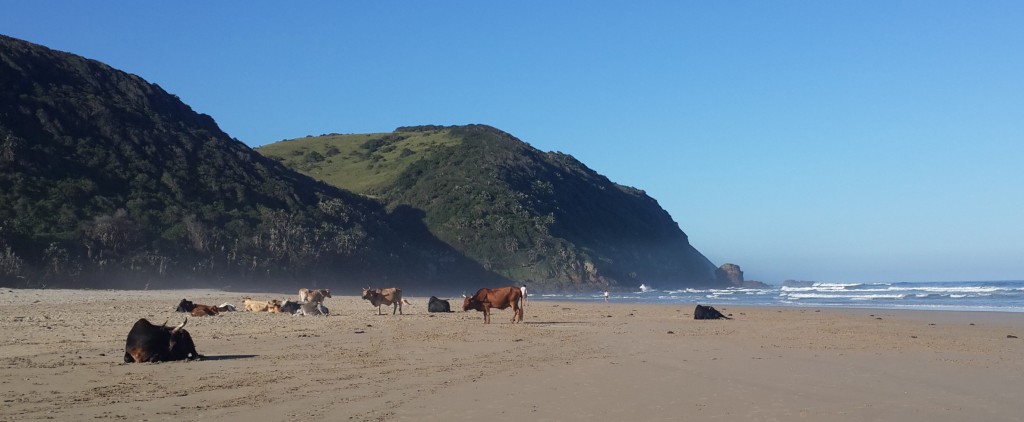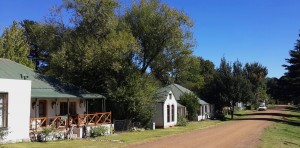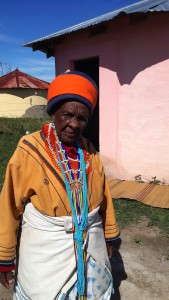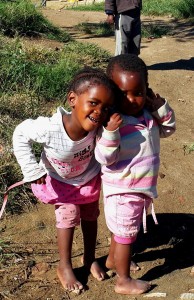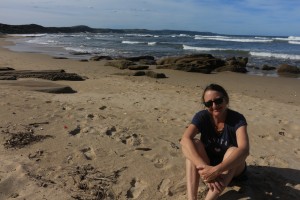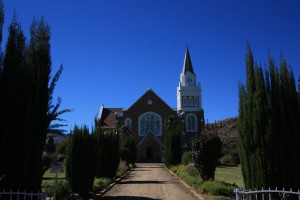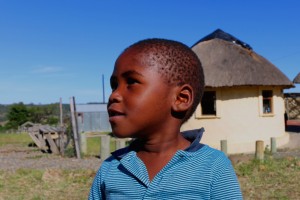April 2015
For our 17th and final land-border crossing of the trip, we had a smooth re-entry to South Africa at the Telebrug border-post; we’re now on ‘The Final Leg’ to Port Elizabeth to put Cuthbert on the boat back to Europe. There aren’t any ‘world class’ attractions to visit on our drive across the Eastern Cape Province, but it’s reported to be very pleasant scenery – so off we set.
First we passed through the small tourist towns of Lady Grey and Rhodes, over the highest pass in South Africa (Naude’s Nek 2,500 m) to Maclear, then down to the coast at Port St Johns. We were excited to have our first view of the ocean since leaving Dar Es Salaam 3 months ago; it was great to camp by the sea again, have long walks along beautiful deserted beaches and fall asleep to the noise of the waves crashing. From here it was a rough run on a 4×4 trail southwards down the Wild Coast to Coffee Bay and on to Cintsa, near East London. This area is known as Transkei, home of Nelson Mandela’s Xhosa people and one of the few areas of South Africa that still retains a genuinely rural, traditional and tribal feel. In Cintsa we park-up for a few nights at Buccaneers – a great camp, right on the beach.
Load-shedding – So what about South Africa?
In this travel blog we have avoided the temptation to compete with John Simpson as international news reporter ‘extraordinaire’ and we have made very few political comments or observations on the countries that we have travelled through. So far, the only exception to this has been our comments on Mugabe’s regime in Zimbabwe (see Post-script on Zim) and let’s face it, he does make himself pretty difficult to ignore with his controversial antics.
Now after a total of almost 12 weeks in South Africa, we feel the need to make another exception and chip-in on the current ridiculous situation with South Africa’s dilapidated power generation system. We won’t be challenging the BBC’s investigative journalists to get to the heart of this problem, but in a less than professional manner, we would ask the question: “WTF is going on???”
Every day, at totally random times and without any prior announcement, households and business premises in a particular location will have their grid power supply cut off for an unspecified period of time. This is ‘Load Shedding’. As we travel through South Africa we find this matter dominating society to an extent impossible to ignore. Everyone is talking (or more accurately, moaning) about it. On a daily basis, homes, shops, hotels and restaurants are suddenly plunged into darkness, computer systems and tills ‘crash’, fridges and freezers defrost and, and, and…
‘Load-shedding’ is supposedly to conserve and to evenly distribute South Africa’s limited power resources. But why, in a 21st Century ‘first-world’ democracy which 20 years ago was generating far more capacity than it as a nation could use, is it necessary to ration the use of power?
Apparently, through a lack of up-keep, maintenance and investment, South Africa’s power stations are generating less power than they did 20 years ago; whilst progressive modernisation of the country over the same period has dramatically increased demand. It doesn’t take a rocket-scientist to spot the ‘supply/demand gap’ here. We are told that South Africa is selling power conveniently designated as ‘surplus’ to its neighbouring countries, whilst being unable to support its own national demands. If the power cuts to end-users were carried out in a coordinated fashion, with a routine programme of pre-notified ‘outages’, the problem may be more manageable; instead there is a random switch-off. Power can be lost at any time of day for any length of time with no prior warning. It is typically for a few hours at a time, but we heard of one east-coast tourist town losing power for 22 hours on Easter Sunday.
South Africa is a truly amazing country to visit, with more national parks, more impressive scenery, more entertaining cities and more first-class tourist attractions than any other country in Africa. We have spent more time here than in any other country on this tour and have still not seen everything that we would like to see. But over our 12 weeks here, we can honestly say that we are sadly witnessing a country slowly falling apart. The power generation problems are just one of a myriad of significant socio-political problems facing the nation today. We could rant on and on about the issues: the tourist valley in Eastern Cape whose mains water supply became contaminated with sewerage due to cracks in the water supply pipes; the 24% unemployment which as we go to press with this Blog, is causing the inner cities of Durban and Johannesburg to descend into riots and violence with attacks on immigrants who have allegedly ‘stolen’ jobs from South Africans. The local radio stations in Eastern Cape are running ‘Say No to Xenophobia‘ campaigns, but we’ll leave the full analysis to John Simpson 😉
After suffering the Load Shedding in Cintsa (or more accurately, listening to other people suffering the Load Shedding, we have our own solar-power system in Cuthbert 🙂 ) we moved on to Port Alfred. From here the last 150 km of our trip linked up with the route we had taken a year ago in a hire car when we going to collect Cuthbert off the ship in Port Elizabeth; a huge sense of déjà vu. We headed down to the same beach café where we had sat a year before in excited anticipation of our adventure ahead. Now we could sit in the same place and, over some great sea-food and a glass of chilled Sauv-B, think back over an amazing year in Africa.
All that is left now is to re-trace our steps from last year, into Port Elizabeth where we will stay for a few days before handing Cuthbert over to the shippers. First we plan to catch up with Gavin and Lee, our new South African friends that we met when we first arrived last year; we also need to spend some time sorting out our stuff, cleaning Cuthbert and preparing him to meet all the shipping regulations for the voyage.
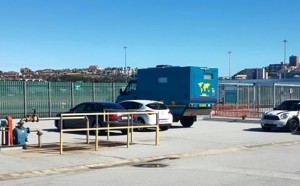 Finally, after an enjoyable few days in Port Elizabeth catching up with Gavin and Lee and preparing Cuthbert for the voyage, we handed him over to the shipping agent at the port. After a small volume of inevitable bureaucracy, we said our farewell to Cuthbert and were then dropped at the airport for our flight to UK via Johannesburg and Dubai. The end of a terrific adventure 🙂
Finally, after an enjoyable few days in Port Elizabeth catching up with Gavin and Lee and preparing Cuthbert for the voyage, we handed him over to the shipping agent at the port. After a small volume of inevitable bureaucracy, we said our farewell to Cuthbert and were then dropped at the airport for our flight to UK via Johannesburg and Dubai. The end of a terrific adventure 🙂
Thank you Africa, you are a truly amazing place. We’ll be back… one day!
Below is the map of our final route in South Africa (red line = Cuthbert route; blue line = previous trips in South Africa in a different vehicle). Click here to see the map of Cuthbert’s full Africa route map

